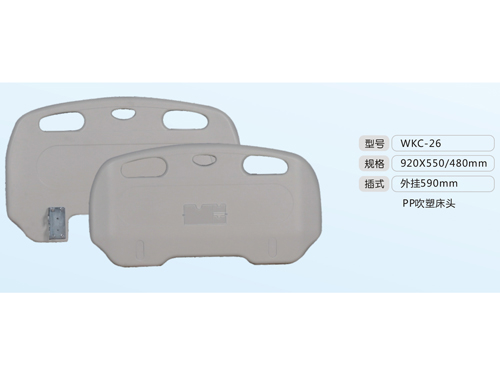

Medical headboard: a caring guardian for patients
In the special space of hospital wards, the medical headboard may seem like an inconspicuous component, but it plays a crucial role, like a caring guardian silently guarding patients.
The primary function of a medical headboard is to provide comfort and safety assurance for patients. Its height and angle design fully consider ergonomic principles and can be flexibly adjusted according to patient needs. For example, when a patient needs to stand up to eat, read, or communicate with family members, the headboard can be raised smoothly to support the patient's back and avoid discomfort caused by prolonged reliance. For patients with limited mobility, the safety handrails equipped on the headboard provide strong support for their daily movements such as getting up and turning over, greatly reducing the risk of falls and giving patients a dual sense of psychological and physical security.
In terms of medical functions, the headboard integrates multiple key devices. There is usually an electrical control device on top, which is convenient for medical staff to operate. It can adjust the bed height and angle with one click, achieving accurate adjustment of the patient's position. This is particularly important in emergency and nursing processes, and can quickly meet the requirements of different treatment scenarios for the patient's position. At the same time, the headboard also integrates various medical gas interfaces, such as oxygen and negative pressure suction interfaces. These interfaces are arranged reasonably, clearly labeled, and convenient for medical staff to quickly connect corresponding equipment in emergency situations, ensuring the life support needs of patients and buying valuable time for treatment.
In terms of material selection, the medical headboard is very particular. The surface is often made of antibacterial and easy to clean materials, such as high-quality engineering plastics or specially treated metal materials. Antibacterial materials can effectively prevent bacterial growth, reduce the risk of cross infection in the ward, and create a relatively safe and hygienic environment for patients. Moreover, these materials have a smooth surface. During daily cleaning, medical staff can gently wipe with a damp cloth to remove stains and bacteria, greatly improving the efficiency and effectiveness of ward cleaning work. The internal structure is made of high-strength and lightweight materials to ensure the stability of the headboard without adding too much weight to the overall bed, making it easy to move and operate the bed.
Many medical equipment manufacturers have invested a lot of effort in the research and production of medical headboards. They constantly innovate in technology, work closely with medical institutions, and optimize the design of headboards based on feedback from medical staff and patients. For example, some manufacturers have developed intelligent headboards that can be connected to hospital information management systems to display real-time basic patient information, vital sign data, etc., making it convenient for medical staff to view at any time and improving the timeliness and accuracy of medical services.
From ordinary wards to intensive care units, medical headboards play an indispensable role in the treatment and rehabilitation process of patients due to their multifunctional characteristics. It is a manifestation of humanized design in medical facilities, bringing comfort and peace of mind to patients, providing convenience for medical workers, and becoming a crucial part of modern medical environments.